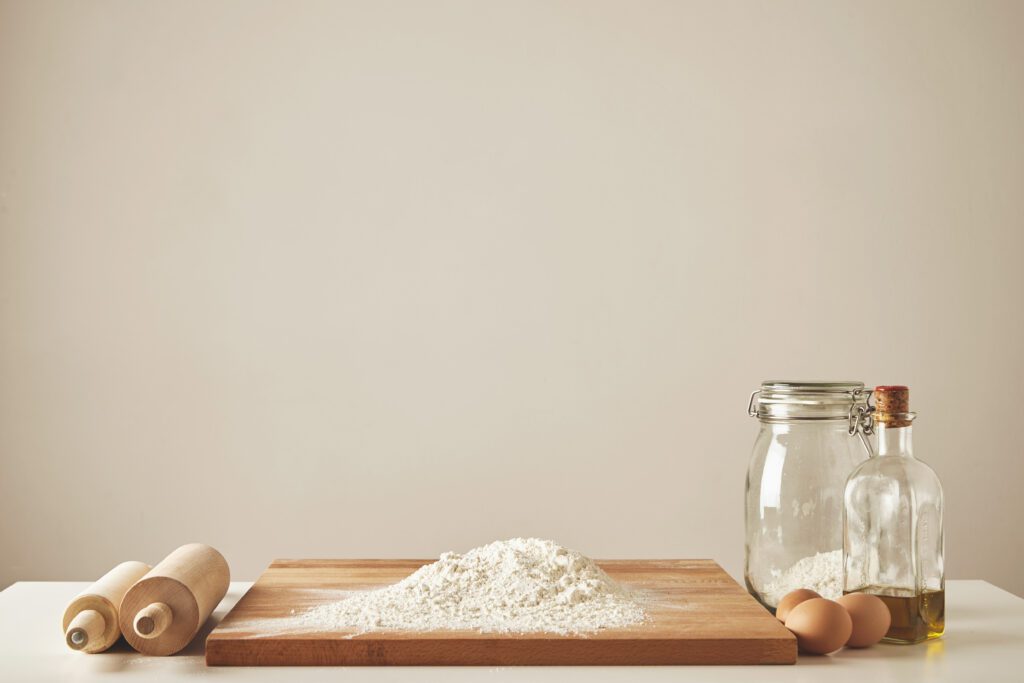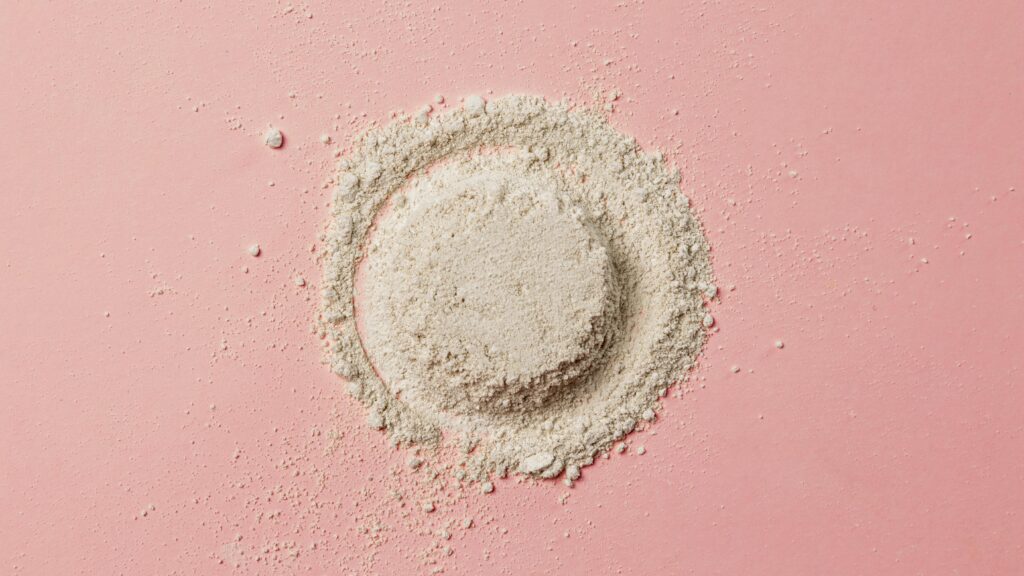Ragi, also known as finger millet, is a cereal that has been cultivated for thousands of years, particularly in Africa and South Asia. It is got from dried millet grains and common in Uganda.
Ragi flour, made from ground ragi grains, is a staple in many Indian households.
Known for its impressive nutritional profile and versatility, ragi flour is increasingly recognized as a superfood.
Nutritional value of Ragi Flour

Ragi flour is packed with essential nutrients, making it an excellent addition to a balanced diet.
Here are some key nutritional benefits:
- Rich In Calcium
- High In Fiber
- Gluten-Free
- Packed With Iron
- Protein Rich
- Low Glycemic Index
-
Rich in Calcium:
Ragi flour is one of the best natural sources of calcium, which is crucial for bone health.
This makes it especially beneficial for growing children, pregnant women, and the elderly.
-
High in Fiber:
The high dietary fiber content in ragi helps in maintaining healthy digestion, preventing constipation, and promoting a feeling of fullness, which can aid in weight management.
-
Gluten-Free:
Ragi flour is naturally gluten-free, making it a suitable alternative for individuals with gluten intolerance or celiac disease.
-
Packed with Iron:
Ragi is an excellent source of iron, which is essential for the formation of hemoglobin and preventing anemia.
-
Protein-Rich:
While not as high in protein as some legumes, ragi flour still offers a good amount of protein, which is necessary for muscle repair and overall growth.
-
Low Glycemic Index:
Ragi flour has a low glycemic index, making it a good option for diabetics as it helps in regulating blood sugar levels.
Nutritional Values of 100g Ragi Flour

The following table outlines the nutritional values of a 100 g serving of ragi flour based on data from the USDA:
| Nutrient | Value | % Daily Value (DV) |
|---|---|---|
| Calories | 385 kcal | – |
| Macronutrients | ||
| Total Fat | – | 7% |
| Saturated Fat | – | 3% |
| Polyunsaturated Fat | – | 5% |
| Monounsaturated Fat | – | 2% |
| Cholesterol | – | 0% |
| Sodium | – | 0% |
| Total Carbohydrates | – | 25% |
| Dietary Fiber | – | 14% |
| Sugars | – | 2% |
| Protein | – | 10% |
| Micronutrients | ||
| Minerals | ||
| Calcium | – | 26% |
| Iron | – | 11% |
| Potassium | – | 27% |
| Vitamins | ||
| Thiamine (Vitamin B1) | – | 5% |
| Riboflavin (Vitamin B2) | – | 7.6% |
| Niacin (Vitamin B3) | – | 3.7% |
| Folic Acid (Vitamin B9) | – | 3% |
| Vitamin C | – | 7% |
| Vitamin E | – | 4.6% |
This nutritional profile highlights the value of ragi flour as a nutritious and versatile ingredient suitable for a balanced diet.
Health Benefits Of Ragi Flour
The health benefits of Ragi flour are discussed below:
- Bone Health
- Digestive Health
- Weight Management
- Diabetes Management
- Heart Health
- Support Skin Health
- Helps In Detoxification
- Antioxidant Properties
- Improve Lactation
- Boosts Immunity
- Reduces the Risk of Chronic Diseases
Culinary Uses & Recipes Of Ragi Flour

Ragi flour is extremely versatile and can be used in a variety of dishes, both traditional and modern:
- Ragi Roti
- Ragi Dosa
- Ragi Porridge
- Ragi Cookies and Cakes
- Ragi Mudde
Ragi Roti
Ingredients:
- 1 cup ragi flour
- 1/4 cup whole wheat flour (optional, for binding)
- Salt to taste
- Warm water as needed
- 1 tablespoon oil (optional)
- Finely chopped onions, green chilies, and coriander leaves (optional, for flavor)
Instructions:
- In a mixing bowl, combine ragi flour, whole wheat flour (if using), and salt.
- Gradually add warm water and knead into a soft dough. You can add the oil and chopped onions, green chilies, and coriander leaves for added flavor.
- Divide the dough into small balls.
- Roll each ball into a flat disc using a rolling pin, dusting with a little flour if necessary.
- Heat a tawa or griddle over medium heat. Cook each roti on both sides until brown spots appear and it is cooked through.
- Serve hot with curry, chutney, or yogurt.
Ragi Dosa
Ingredients:
- 1 cup ragi flour
- 1/4 cup rice flour
- 1/4 cup semolina (rava)
- 1/2 cup yogurt
- Salt to taste
- Water as needed
- Finely chopped onions, green chilies, coriander leaves (optional)
Instructions:
- In a bowl, mix ragi flour, rice flour, semolina, and salt.
- Add yogurt and enough water to make a smooth batter of pouring consistency.
- Let the batter rest for 15-20 minutes.
- Heat a non-stick pan or tawa over medium heat. Pour a ladleful of batter and spread it into a thin dosa.
- Sprinkle chopped onions, green chilies, and coriander leaves if desired.
- Drizzle a little oil around the edges. Cook until the dosa turns crispy and golden brown.
- Serve hot with chutney or sambar.
Ragi Porridge (Ragi Malt)
Ingredients:
- 1/4 cup ragi flour
- 2 cups water
- 1 cup milk (optional, for creaminess)
- Jaggery or sugar to taste
- A pinch of cardamom powder
- Nuts and raisins (optional, for garnish)
Instructions:
- In a saucepan, mix ragi flour with water to avoid lumps.
- Cook the mixture over medium heat, stirring continuously until it thickens.
- Add milk, if using, and continue to cook for a few more minutes.
- Sweeten with jaggery or sugar to taste and add a pinch of cardamom powder.
- Garnish with nuts and raisins if desired.
- Serve warm as a nutritious breakfast or snack.
Ragi Cookies
Ingredients:
- 1 cup ragi flour
- 1/2 cup whole wheat flour
- 1/2 cup butter or ghee
- 1/2 cup powdered jaggery or brown sugar
- 1/2 teaspoon baking powder
- A pinch of salt
- 1 teaspoon vanilla extract (optional)
- 2-3 tablespoons milk (as needed)
Instructions:
- Preheat the oven to 180°C (350°F). Line a baking tray with parchment paper.
- In a bowl, cream together butter and jaggery until light and fluffy.
- Add vanilla extract, if using.
- In a separate bowl, whisk together ragi flour, whole wheat flour, baking powder, and salt.
- Gradually add the dry ingredients to the butter mixture, mixing to form a dough. Add milk if needed to bring the dough together.
- Roll the dough into small balls and flatten them slightly.
- Place the cookies on the prepared baking tray.
- Bake for 12-15 minutes or until the edges are golden brown.
- Let the cookies cool on a wire rack before serving.
Ragi Mudde (Ragi Balls)
Ingredients:
- 1 cup ragi flour
- 2 cups water
- A pinch of salt
Instructions:
- Bring the water to a boil in a large saucepan and add a pinch of salt.
- Gradually add ragi flour to the boiling water, stirring continuously to avoid lumps.
- Cook the mixture on low heat until it thickens and leaves the sides of the pan.
- Remove from heat and let it cool slightly.
- Wet your hands and shape the mixture into small balls.
- Serve hot with sambar, curry, or chutney.
Conclusion
Ragi flour is not just a traditional ingredient but a nutritional powerhouse that caters to modern dietary needs. Whether you are looking to improve bone health, manage weight, or find gluten-free options, ragi flour offers a host of benefits.
Its versatility in the kitchen further adds to its appeal, allowing for creativity in making healthful and delicious dishes.
Integrating ragi flour into your diet can lead to significant health improvements and culinary enjoyment.
Frequently Asked Questions About Ragi Flour

What is Ragi ?
Ragi, also known as finger millet (scientific name: Eleusine coracana), is an ancient grain that has been cultivated for thousands of years, primarily in Africa and South Asia.
It is a hardy crop known for its resilience in adverse weather conditions, making it a staple in semi-arid and tropical regions.
How to make Ragi Dosa?
Ingredients:
- 1 cup ragi flour
- 1/4 cup rice flour
- 1/4 cup semolina (rava)
- 1/2 cup yogurt
- Salt to taste
- Water as needed
- Finely chopped onions, green chilies, coriander leaves (optional)
Instructions:
- In a bowl, mix ragi flour, rice flour, semolina, and salt.
- Add yogurt and enough water to make a smooth batter of pouring consistency.
- Let the batter rest for 15-20 minutes.
- Heat a non-stick pan or tawa over medium heat. Pour a ladleful of batter and spread it into a thin dosa.
- Sprinkle chopped onions, green chilies, and coriander leaves if desired.
- Drizzle a little oil around the edges. Cook until the dosa turns crispy and golden brown.
- Serve hot with chutney or sambar.
How to make Ragi Roti ?
Ingredients:
- 1 cup ragi flour
- 1/4 cup whole wheat flour (optional, for binding)
- Salt to taste
- Warm water as needed
- 1 tablespoon oil (optional)
- Finely chopped onions, green chilies, and coriander leaves (optional, for flavor)
Instructions:
- In a mixing bowl, combine ragi flour, whole wheat flour (if using), and salt.
- Gradually add warm water and knead into a soft dough. You can add the oil and chopped onions, green chilies, and coriander leaves for added flavor.
- Divide the dough into small balls.
- Roll each ball into a flat disc using a rolling pin, dusting with a little flour if necessary.
- Heat a tawa or griddle over medium heat. Cook each roti on both sides until brown spots appear and it is cooked through.
- Serve hot with curry, chutney, or yogurt.
Is Ragi Gluten-free ?
Yes, ragi (finger millet) is naturally gluten-free. This makes it an excellent choice for individuals with gluten intolerance or celiac disease.
Ragi provides a valuable alternative to wheat and other gluten-containing grains, allowing those with gluten sensitivities to enjoy a wide range of nutritious foods without adverse effects.
Is Ragi Good for weight loss?
Yes, Ragi is good for weight loss due to several key properties:
- High Fiber Content
- Low Glycemic Index
- Nutrient-Dense
- Low in Fat
- Metabolism Boosts
Reference Blog: https://www.netmeds.com/health-library/post/ragi-nutrition-health-benefits-uses-for-skin-and-hair-side-effects
Read More: https://yogayurvedaa.com/ash-gourd-juice-benefits-recipes-side-effects-and-more/
